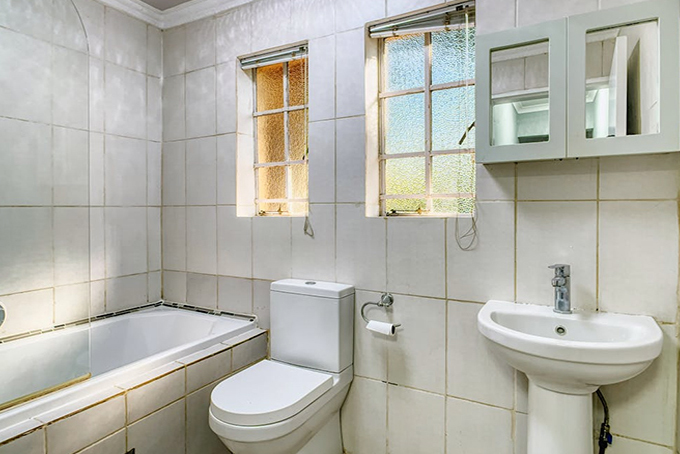Remodeling your home is a significant decision that involves both financial investment and personal commitment. Whether you live in the suburbs of Chicago, a historic neighborhood in Springfield, or a rural area of Illinois, the question of when to remodel often arises. There’s no one-size-fits-all answer to this question. Unlike changing the oil in your car, there’s no set mileage for a home renovation. The decision to remodel depends on a variety of factors unique to your situation. Factors such as wear and tear, changing tastes, and the need for modern amenities all contribute to the decision-making process. But fear not, Illinois homeowner! This blog will explore some key considerations to help you decide how often you should consider remodeling your home in Illinois.
Understanding Your Home’s Lifespan
Before diving into specific timelines, it’s essential to understand that different parts of your home have varying lifespans. For instance, roofing materials typically last 20-30 years, while kitchen appliances may need to upgrade every 10-15 years depending upon the quality of the appliances. Flooring, plumbing, and HVAC systems also have their own longevity.
Signs That Tells You it’s Time to Remodel

1. Functionality Decline
Is your home’s layout hindering your lifestyle? Maybe your kitchen is too small for those epic family meals, or your bathroom is stuck in a bygone era. Functionality is a major reason for renovation. When parts of your home no longer serve their intended purpose efficiently, it’s a clear sign that remodeling is due. A remodel can improve traffic flow, create a more open floor plan, or simply give you that spa-like bathroom you’ve been dreaming of.
2. Outdated Styles
Styles change over time, and what was trendy a decade ago might now appear outdated. Updating interiors can not only enhance visual appeal but also increase the value of your home. You can change your bathroom vanity and kitchen cabinet’s hardware to change its look on budget and add new organizers to make your space clutter-free.
3. Safety and Maintenance
Structural integrity and safety hazards should never be overlooked. Regular inspections can help identify areas that need attention, such as leaky roofs, deteriorating foundations, or electrical issues such as outdated wiring. Address these safety hazards before they become bigger problems. Also, if your heating bill is skyrocketing then your older windows and insulation can be energy guzzlers. Modernizing these elements can save you money in the long run.
4. The Investment Factor
Thinking about selling your home? Strategic renovations can boost your home’s value. Focus on improvements with broad appeal, like kitchen and bathroom upgrades. However, avoid extravagant features that might not resonate with most buyers.
5. Curb Appeal and Comfort
Does your house look a little worse for wear? A fresh coat of paint or updating the siding can do wonders for your home’s exterior. Remember, you deserve a place that feels comfortable and reflects your style. If your home just isn’t sparking joy anymore, a remodel can breathe new life into it.
Recommended Timelines for Home Remodeling in Illinois
1. Every 5-10 Years
Major renovations such as kitchen and bathroom remodels typically fall into this category. These spaces are heavily used and can benefit from updates to both style and functionality.
2. Every 10-15 Years
This timeframe often applies to larger systems like roofing, siding, and HVAC systems. Investing in these updates ensures your home remains energy-efficient and structurally sound.
3. Every Month – Year or As Needed
Some projects may arise unexpectedly due to damage or changes in lifestyle. Flexibility in your remodeling schedule allows for addressing these issues promptly.
Best Season to Remodel Your Home in Illinois

The best time to remodel a house in Illinois depends on whether you’re planning an interior or exterior project, and what your priorities are:
1. Spring (March-May)
This is the busiest time for renovations, as the weather warms up and people are eager to get started on projects. The advantage of renovating your home in this season is that contractors are in full swing and can get started quickly and the disadvantage is that this is the busiest season, so expect to pay premium prices and potentially deal with scheduling conflicts.
2. Summer (June-August)
Summer is another popular time for renovations, especially for interior projects. The nice weather allows people to spend more time outdoors and minimize disruption from construction inside. However, similar to spring, summer is a busy season with high demand for contractors.
3. Fall (September-November)
Fall can be a good time to find deals on renovations and contractors, as demand starts to slow down after the summer ends. However, some exterior projects may need to be completed before the coldest weather arrives.
4. Winter (December-February)
Winter is the slowest season for contractors, so you’re more likely to get a good deal and find someone available to start your project right away. However, working conditions can be difficult in cold weather, which may slow down progress and potentially raise costs due to additional precautions. Also, some exterior projects simply can’t be done in freezing temperatures.
No matter what season you choose, it’s always a good idea to start planning your project early so you can get quotes from skilled contractors and secure a spot on their schedule.
Considering Local Factors For Remodeling Home in Illinois
Illinois’s climate can influence remodeling needs. Harsh winters and humid summers can accelerate wear on exterior materials like siding and roofing. Ensuring these components are robust and up-to-date is crucial for maintaining comfort and energy efficiency throughout the seasons. Following are some factors to consider that helps you to make an informed decision about when to take on that next home improvement project:
1. Budgeting and Planning
Remodeling projects vary widely in cost, scope, and duration. Establishing a realistic budget and timeline is essential for a successful renovation. Factor in potential contingencies and consider consulting with local contractors who understand the unique challenges of remodeling in Illinois.
2. Project Type
Interior renovations can often be scheduled any time of the year, whereas exterior projects are more weather-dependent.
3. Contractor Availability
Busy seasons (spring and summer) may mean longer wait times or higher costs.
4. Personal Schedule
Consider your own availability and how the remodel will impact your daily life.
Conclusion
Ultimately, the decision of how often to remodel your home in Illinois depends on several factors including the age of your home, your budget, and your personal preferences. Regular maintenance and occasional updates not only enhance your living experience but also protect your investment in your property. Whether you’re aiming to increase resale value or simply improve your quality of life, strategic remodeling at appropriate intervals can help achieve those goals effectively. By staying proactive and attentive to your home’s needs, you can ensure that it remains a comfortable and attractive place for years to come. So, focus on creating a space that’s safe, functional, and reflects your style.


